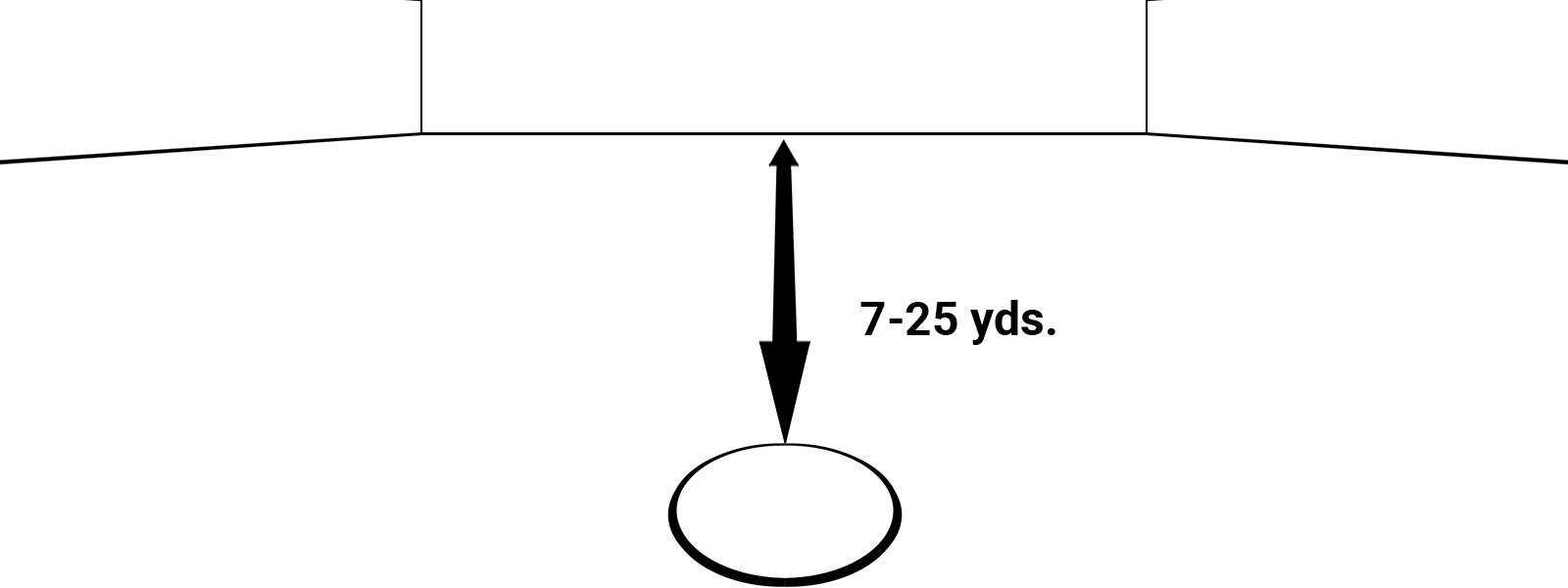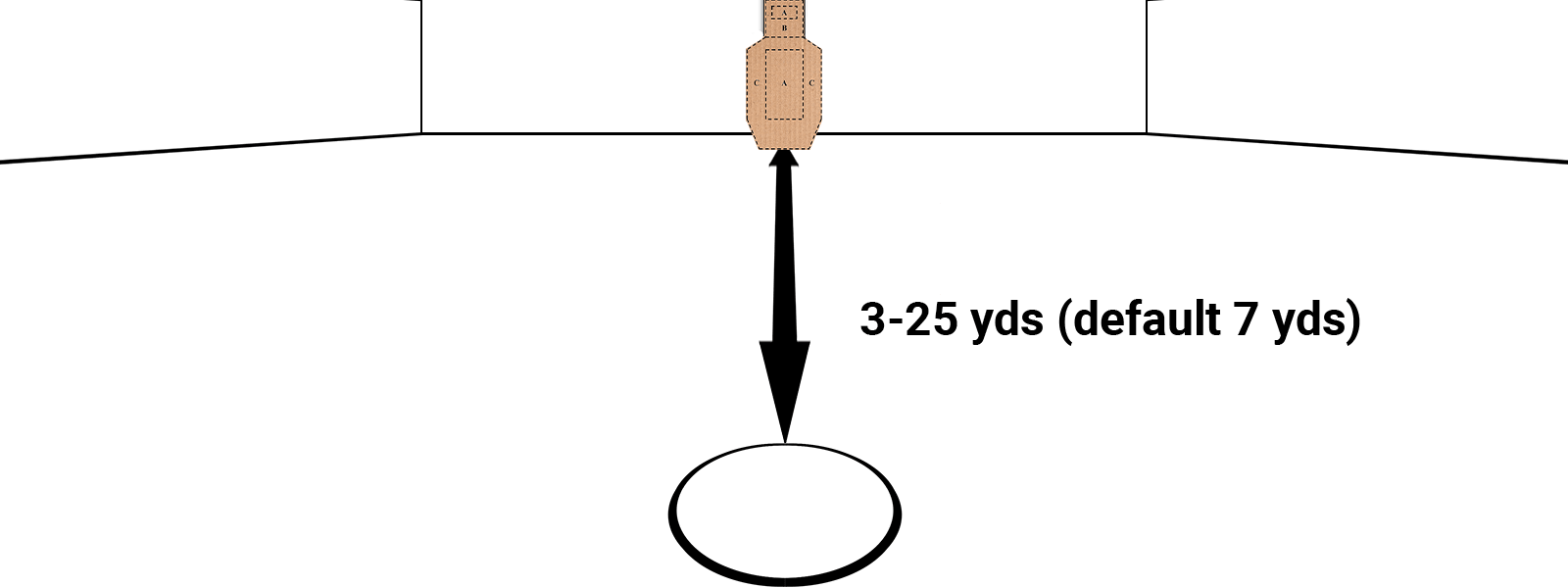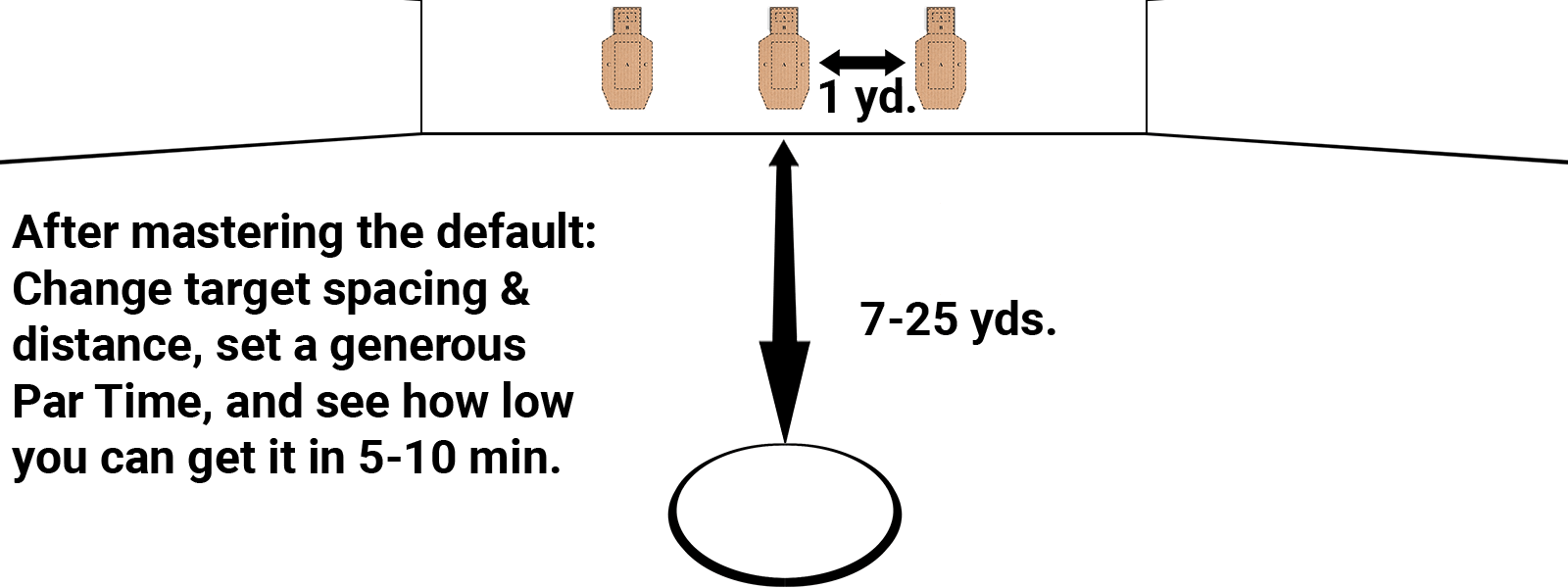FREE Dry Fire Timer for Training
Help
Choose your Drill, your Difficulty, and then click Start.
- If you choose a drill other than Freestyle, there are Setup instructions below.
- Start the drill at the first beep, and finish it before the second beep.
- Drills are in sets of 10.
- If you pass 10/10 reps, reduce Par Time by 0.1.
- If you pass at least 8/10 reps, keep practicing 'till you get 10/10.
- If you pass less than 8/10 reps, increase Par Time by 0.1.
Setup - Dry Trigger Press

- Unload your pistol.
- Start out with a blank wall (with a safe backstop), so you can focus on your sight alignment.
- Aim your pistol at the wall. Your finger may be on the trigger, but may not apply any pressure yet.
- Start the timer. At the first beep, press the trigger until it breaks (the gun goes click).
- As you press the trigger, note any movement in the sights.
- Rack the slide and take aim for the next rep.
- A "Pass" is breaking the trigger with no movement in the sights.
If you've never done this before, do it untimed until you master the trigger press with no time limit.
Variations
- Alternate freestyle shooting and single-hand shooting.
- Try different pistols with different triggers.
- Start with trigger finger safe (on slide)
-
Having trouble making it at .20 or less?
Try starting with the trigger prepped (slack out, some pressure on the wall).
Once you can 10/10 that, back off the prepping bit by bit until you can get a 10/10 starting with trigger finger safe.
Helpful Gear
Having trouble reading iron sights?
If you have a pistol with a rail, get a cheap, rechargable red laser like the BattleBeam V1 Laser Sight
No rail? Use a laser trainer cartridge:
Technique Hints
How to Perfect Your Pistol Trigger Press [for Free]
Short Par Times
Each beep is 0.30 seconds long, and it takes 0.15 - 0.20 sec to react to it.
At par times 0.30 and below, the beeps start blending together.
Instead of trying to tell when one begins and the other ends, you can instead try to break the trigger before the beeps finish playing:
- 0.2 sec par time = 0.50 beep duration
- 0.1 sec par time = 0.40 beep duration
- 0.0 sec par time = 0.30 beep duration
Setup - Draw to Step 1

- Unload your pistol.
- Equip your belt and holster.
- Start with hands at your sides.
- At the beep, get a good grip with your shooting hand on the pistol.
That's it. You may also prep the support hand for the rest of the draw, but we're focusing on just the first part of the draw here.
Technique Hints
Snatch the gun, don't push it down. Look at how the green line compares with the belt buckle:
Get the web of your hand solid against the backstrap. Find the angle your hand has to be to do that, then set it to that angle as you start the draw.
Stage your support hand for the rest of the draw.
A good starting point is to present the pistol, slowly holster the gun, and focus on what your support hand does as you do that.
How and when does it break its grip from the pistol? How does it get out of the way so the pistol can be holstered safely? If you can break that down and then do it in reverse, you just took a shortcut to an efficient draw.
Practice drawing both with the hands below the gun and above it.
Short Par Times
Each beep is 0.30 seconds long, and it takes 0.15 - 0.20 sec to react to it.
At par times 0.30 and below, the beeps start blending together.
Instead of trying to tell when one begins and the other ends, you can instead try to get to Step 1 before the beeps finish playing:
- 0.2 sec par time = 0.50 beep duration
- 0.1 sec par time = 0.40 beep duration
- 0.0 sec par time = 0.30 beep duration
Setup - Draw from Step 1 to Step 2

- Unload your pistol.
- Equip your belt and holster.
- Start with your shooting hand on the pistol with a good grip.
- At the beep, draw your pistol to around sternum height, about 10-12" from your sternum.
- As the gun comes into position, get a good 2-hand grip on the pistol.
Technique Hints
Timing the support hand is tricky. It can't be so slow that your shooting hand has to wait on it...
But it can't be so fast that you muzzle it.
If you can clap your hands together without a gun, the coordination is similar.
Also, make sure your support hand is staged in a way that you don't muzzle it, even with bad timing. One way to bypass this is to turn your wrist so your fingers point downward, instead of toward the opposite shoulder:
Short Par Times
Each beep is 0.30 seconds long, and it takes 0.15 - 0.20 sec to react to it.
At par times 0.30 and below, the beeps start blending together.
Instead of trying to tell when one begins and the other ends, you can instead try to get to Step 2 before the beeps finish playing:
- 0.2 sec par time = 0.50 beep duration
- 0.1 sec par time = 0.40 beep duration
- 0.0 sec par time = 0.30 beep duration
Setup - Draw from Step 2 to Step 3

- Unload your pistol.
- Equip your belt and holster.
- Start with a good 2-hand grip on the pistol, with the pistol at about sternum height, and 10-12" from your sternum.
- At the beep, present your pistol on target and get a sight picture before the second beep.
- You don't have to press the trigger for this drill.
Helpful Gear
A laser can help you learn what sight pictures are good enough at different target distances, and to help get your hands to move in a straight line as they present the gun. If you have a pistol with a rail, get a cheap, rechargable red laser like the BattleBeam V1 Laser Sight
Technique Hints
Press the gun out in a straight line, with the muzzle/sights aligned the whole way.
If you let the muzzle dip down at the start (bowling), it takes more time to acquire the sights.
If you raise the muzzle at the start (fishing), it takes more time to acquire the sights.
Burst with speed in the first 10-20% of movement, then let the gun coast in the last 80-90%.
If you burst the whole way, you jab out the gun, and take longer to aim once the gun is on target.
Relax your neck and shoulders as you present. If you move those, it adds unnecessary movement and slows you down.
Setup - Draw from Step 1 to Step 3

- Unload your pistol.
- Equip your belt and holster.
- Start with your shooting hand on the pistol with a good grip.
-
At the beep, draw your pistol and get a sight picture with a good grip before the second beep.
You don't have to press the trigger for this drill.
Technique Hints
Combine the technique tips from the other microdrills (Step 1, Step 1 to Step 2, Step 2 to Step 3).
Variations
See toggles on the timer app (180º Turn, etc.)Setup - Draw (Full)

- Unload your pistol.
- Equip your belt and holster.
- Start with hands at your sides.
-
At the beep, draw your pistol and get a sight picture with a good grip before the second beep.
You don't have to press the trigger for this drill.
Technique Hints
Combine the technique tips from the other microdrills (Step 1, Step 1 to Step 2, Step 2 to Step 3). Hands at sides:
Hands at "whoa dude":
Variations
See toggles on the timer app (180º Turn, etc.)Setup - Concealed Draw to Step 1

- Unload your pistol.
- Equip your belt, holster, and concealment garment(s).
- Start with hands at your sides.
- At the beep, clear your concealment and get a good grip with your shooting hand on the pistol, before the second beep.
Technique Hints
To get this info, sign up for the FBI Transformation Course. If you've taken the course, see the Class 7 summary slides.
Variations
See toggles on the timer app (180º Turn, etc.)Short Par Times
Each beep is 0.30 seconds long, and it takes 0.15 - 0.20 sec to react to it.
At par times 0.30 and below, the beeps start blending together.
Instead of trying to tell when one begins and the other ends, you can instead try to get to Step 1 before the beeps finish playing:
- 0.2 sec par time = 0.50 beep duration
- 0.1 sec par time = 0.40 beep duration
- 0.0 sec par time = 0.30 beep duration
Setup - Target Transitions

- Unload your pistol.
- Set two targets target 7 yards away, 1 yard apart.
-
Take aim on one target. At the beep, transition to the other target and get a good sight picture before the second beep.
You don't have to press the trigger for this drill.
When you start to feel comfortable with this drill, switch things up. See "Variations", below.
Helpful Gear
A laser can help you learn what sight pictures are good enough at different target distances. If you have a pistol with a rail, get a cheap, rechargable red laser like the BattleBeam V1 Laser Sight
Technique Hints
Lead with your eyes. Look exactly where you want to hit, then let the gun follow.
Move precisely while keeping your arms and shoulders relaxed, like using a mouse pointer. Tensing up is fast at first, but takes more time to aim once you have the gun on target. This applies in dry practice. Here's Ben Stoeger:
For more, sign up for the FBI Transformation Course, or check out Practical Pistol Reloaded (2016) . If you've taken the course, see the Class 8 summary slides.
Variations
When using these variations, set a reasonable par time, and see how low you can get it in 5-10 minutes of practice.- Switch up the distances between the targets.
- Set targets higher/lower than the other(s).
- Set targets at varied distances (one at 3 yds., another at 5, 7, 15, etc.).
- Add more targets. Start on one target, and transition to each of the rest before the second beep.
Short Par Times
Each beep is 0.30 seconds long, and it takes 0.15 - 0.20 sec to react to it.
At par times 0.30 and below, the beeps start blending together.
Instead of trying to tell when one begins and the other ends, you can instead try to transition the gun before the beeps finish playing:
- 0.2 sec par time = 0.50 beep duration
- 0.1 sec par time = 0.40 beep duration
- 0.0 sec par time = 0.30 beep duration
Setup - Speed Reload

- Unload your pistol.
- Verify that all magazines you're using in this drill are empty.
- Set 1 target 7 yds. away.
- Take aim on the target with a good 2-hand grip.
-
At the beep, eject the magazine from the pistol and insert a new one. Get another sight picture on the target.
You don't have to press the trigger for this drill.
Technique Hints
Coming soon!
Variations
- Start with the slide locked open, and release it after reloading.
-
Set Par Time to 60%.
At the beep, eject the magazine from the pistol and bring the new one just to the edge of the magwell. -
Set Par Time to 60%. Start at the end of the above variation.
At the beep, seat the magazine, form a good 2-hand grip, and get a good sight picture on target.
Setup - Quick Step
- Unload your pistol.
- Set 3 targets 10 yards away.
-
At your shooting position, tape two parallel lines perpendicular to the targets , 1 yard apart from each other, like this:
._ _ _
. | | - Start with your right foot on the left line, or left foot on the right line.
-
At the beep, engage each target with two shots, then move across to the other side of the lines.
If you started with your right foot on the left line, move until your left foot is on or past the right line.
Then, engage one target with two shots.
You can't be between the lines while firing any shots.
Technique Hints
To get this info, sign up for the FBI Transformation Course. If you've taken the course, see the Class 15 summary slides.
Variations
- Change up the shot order: instead of 6 & 2, do 2 & 6, or 4 & 4.
-
Set the lines up so you have to move forward/back or diagonal instead of left/right.
When moving backward, add a little Par Time to compensate.
Setup - Mobile Shooting
Technique Hints
To get this info, sign up for the FBI Transformation Course. If you've taken the course, see the Class 18 summary slides.
Variations
- Full-size: USPSA metric target; cut off the D zone
- Scaled down 3x: our free printable targets
To max out your gains:
- Sign up for the FBI Transformation Course if you're in central Texas
-
Check out DryFire Reloaded (2017)

Disclaimer: As an Amazon Associate I earn from qualifying purchases, at no extra cost to you.